What is the Biggest Gardening Concern of tropical regions? What makes the soil decrease its quality? Why is the soil in your garden not very porous? Who is responsible for this troubleshoot?
Guess?
Let me tell you, the reason for this problem is the Invasion of flatworms. From where do they come into your garden? How do drive them away from vegetation? This and many other issues related to these unfriendly worms are our main discussion topics here in this article.
How to get rid of flatworms in the garden? There are so many ways to kick off land planarians or flatworms from the garden. You can sprinkle salt, citrus oil, and vinegar to dissolve them. They can be treated by dipping them in warm or boiling water also. Insecticides and hydrogen peroxide spray are also effective to get control over them. Remember cutting them or smashing them may result in regeneration.
There is no other source of their infestation. They might be shifted from nearby lands. Flatworms are both aquatic and land dwellers. We’re going to talk about land planarians that are serious threats to your plantation.
Don’t stop here, move on to read more!
Table of Contents
Why Flatworms Are Not Good For Gardens
Gardeners, beware of flatworms! Why?
Studies have shown that land planarians invasion is one of the major threats to fertile lands of tropical, humid, and cool areas. Their population is increasing day by day because they can behave as cannibals also. In New Zealand, America, Scotland, and Brazil you can find a number of species of flatworms in forests as well as in-home yards.
- They are the biggest enemies of the earthworm and other environment-friendly pests and bugs
- When earthworms will vanish, the soil will ultimately lose its fertility as they are natural decomposers.
- The quality of soil will decrease, it will be harder, low yielding, and lifeless than before.
- These worms can destroy ecosystems as they eat those bugs that are essential for pollination.
Nowadays, gardeners are conscious to know how to deal with them.
Identification of Flatworm
Before treating any worm, try to find out whether it’s friendly or unfriendly to your plantation. Sometimes we know less about pests and start killing those who are beneficial to our gardens. For this, try to get extensive knowledge and do a proper search for any pest you found growing rapidly in your garden. Here are a few bullet points you need to know in order to recognize flatworms at a glance.
Remember not all worms are destructive. Only a few that live like parasites and kill other friendly insects are damaging. If you live in the UK. In Scotland and Newzealand, you would spot land planarians quite often. You can identify them through their shape, size, color, and habitat.
The Shape of Land Flatworms
Surprisingly, there are more than 900 species of land planarians. So, it is not easy to discuss each one. They are soft with a head of half moon-like shape. Sometimes they look like hammerhead fish called New Zealand worms. Not all of them have a hammer-like head. Most of these worms have pointed heads too. The body of almost all landforms is bilaterally symmetrical, flattened from dorsal to ventral portion. There is no circulatory system in these worms. Only their design facilitates the flow of edible material through the body. It is because of their flat body that oxygen flows throughout the body cells. They are totally flat with no segmentation at all like earthworms.
Size of Land worms
Depending on species, habitat, and other factors, the size of a typical flatworm varies. They are 3 -50 cm long and 0.2 -0.5 cm wide. They are not as small as invisible from the eyes and not as long as snakes. You can easily find them in your garden at some shady place. They are sensitive to heat and light. Some species are thicker from the middle and pointed from the edges. Some are even flatter. Below are images of a few species to check out their shape and size.
Have a look at the table!
Color Of Land Flatworms
Mostly darker though colorful creatures!
They come in a wide range of colors from lighter to darker. Some of its species are even white to pale orange. But they develop darker colors when they grow young. Brown, red and black are the most common colors found in typical planarians. Red planarians are aquatic. Thank God, they are not green because in this way they would be impossible to spot whilst sitting on leaves. Brownish and blackish landforms can not be recognized easily when they lay on the soil.
Difference Between Earthworm And Land Worm
Earthworms are innocent and increase soil fertility. Sometimes gardeners fail to identify earthworms from the land planarians.
Earthworms have segmented bodies whilst flatworms have flat. A major clue to differentiate between both of them Earthworms can live freely but most the species of flatworms are parasites and they can even eat earthworms so decreasing the fertility of the soil. That’s why they are deadly creatures!
Where Do Flatworms Live Mostly
Where to find them in your garden? Important query!
The best time to search for them is night time. They come out of mud or soil to prey. In searchlight, you can easily find them
They live on
- Organic debris
- Shady woodland areas
- Cool areas
- Moist areas
- They are also easy to find near earthworms because they feed on them
Hopefully, now you can identify these invasive creatures easily. To know more about them let’s read on the next segment where you can see images of deadly flatworms with their names.
Related Articles: How to get rid of hammerhead worms?
Types of Land flatworms with images
More than 900 types! Wow!
Let’s bring a few species to the spotlight!
Do you love to identify different species of land planarians? The best way is to watch their images and google their habitat. They are spread from Europe to America and from America to Newzealand and the UK. They love to live in tropical, humid areas. In Asia, they are not found as much as in America and Uk. The reason might be the long summer season or extensive sunlight in lower parts areas of Asia. But they do invade China. However not as much as they do love to live in the UK, US, and Europe.
Let’s check everything by a table:
| Harmful land flatworms Names | Names of Invading Countries | Images |
|---|---|---|
| Bipalium(hammerhead worms) | Scotland, Uk, Newzealand, US | 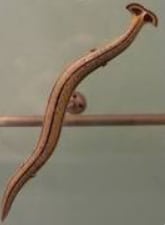 |
| New Zealand Flatworms | Newzealand, UK | 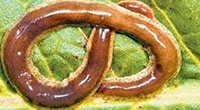 |
| Obama Nungara | South America |  |
| Polyclad gayi | Southern Chile | 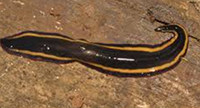 |
| Caenoplana Coerulea | France |  |
6 Proven Ways to Kill Flatworms
Kill them or catch them alive! Not easy though!!
They have slippery bodies and can easily drop down if you catch them alive. Killing them can result in more and more worms. If you cut them into 7 pieces, all of them will regenerate as they can regrow if cut.
However, there are few natural remedies and products available which can fight against these worms as an effective enemy.
Use Hot Water
I would call them silent invaders!
Whenever you plan to buy plant pots, check their soil for the presence of flatworms. If you find some then keep the pot in warm water for more than half an hour. Probably this one is the easiest and most natural way to drive worms away. Boiling water can kill its eggs too. If you spot the eggs in the soil then it’s time to dispose of the plant at some far-off place. Don’t put them in bin tanks near your garden. They will come out again and will damage your plantation. They always shift from some nearby areas. Whilst getting gifts of plant pots, keep an eye check on soil for their presence.
Sprinkle Salt Directly
Wait and see, one more natural tip is there!
YOu can kill flatworms directly if you sprinkle salt on them. They will become lazy and gradually die off. What to do if flatworms are hiding in the soil? No-worries!
Simply prepare a solution of extremely saltish water. Catch them from the soil and dip them in a water solution. They will dissolve. But if you pour this water on soil then it may not work well to kill them.
Use Vinegar
Worms can’t stay with an acidic smell!
White vinegar is acidic and can work as a natural remedy to kill worms. You can directly pour vinegar over the body of the worm, It will burn out or die. If worms are not visible but still invading then you can spray vinegar and water solution over infested areas.
Citrus Oil
Chop them or even smash them but they will not die! Oh
Land planarians like hammerhead worms are not easy to kill. They can regenerate their bodies quickly. If you cut them, smash them they would regenerate again. So, citrus smell or repellents can prove destructive to these deadly creatures. For this pour, high-quality citrus oil in a spray bottle and spray it directly on the worm. If you apply oil to the infected area or soil, it will not be helpful. So, the only way is to direct citrus oil applications and dispose of them to some far-off areas.
Use Biological Insecticides
Check the label first? Is your pesticide killing garden-friendly bugs and earthworms? Never use it again.
Only go for those insecticides that are prepared on biological formula. Such products only kill flatworms and insects that can destroy your garden and nothing else. Here is an effective insecticide that can only kill unfriendly worms, It is designed to use on a variety of plants including broccoli, celery, cabbage, turnip greens, mustard greens, cauliflower, melons, lettuce, tomatoes, shade trees, ornamentals, and many more. It’s the best product to treat flatworms ever found. Go and grab it!
Spray Hydrogen Peroxide
If you find planaria in the water of your garden then it’s time to introduce hydrogen peroxide spray. Though it’s more effective to use in aquariums for aquatic planarians. However, you can spray it in your garden to kill them. You can directly spray it on the animal body or prepare its solution with water if you wanna use it on a large area
The good news about hydrogen peroxide is that it will not damage your plantation. In the aquatic environment, this chemical is supposed to oxygenate the roots of aquatic plants. I would rather recommend it for aquariums or fish tanks than on land.
Tips to Prevent Flatworm’s Invasion
Once you put them away, there is no guarantee that they would never invade again. As they shift from outside sources, it’s better to be an eye-opener about the presence of insects in nearby lands.
Here are a few tips that will stop them from invading again!
- Dispose of infested soil of plantation far away from vegetation so as not to develop them again
- They hate sunlight. Kick them off to some warm place if you spot them
- They are sensitive to citrus odor, if you drop them in citrus detergents, they will dissolve
- Increase sunlight accessibility for your plantation to get rid of them. Place newly planted pots in proper sunlight
- Keep your garden clean and tidy and put organic debris, leaves leftover away from the plantation
- If you find them ask your neighbors about it politely, Maybe they were invading your neighbor’s garden already. Don’t feel shy to talk about them to your neighbors. It’s good for other plant safety.
- Don’t let rainwater stay for a long time in your garden, Arrange a proper drain. Humidity is the primary cause of their invasion.
Bottom Line
It’s time to end the discussion on the topic of how to kill flatworms. Though they bring huge destruction to vegetation yet they are easy to control. They made their entry as outsiders and start living as an inhabitant. It is always good to treat them when they are less in number. Once their population increases, you would not be able to handle them without the assistance of expert insect killers. With the increased accessibility of sunlight, flatworms will not live longer. You can try vinegar, salt, and pesticides. Warm water treatment is good enough to drive them away. Whatever method you may apply, never try to harm friendly insects whilst killing flatworms.

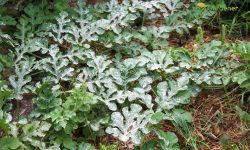
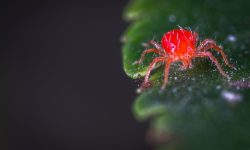
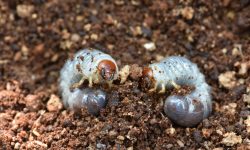
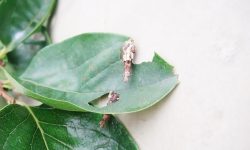
![How Long Does Sevin Dust Last? [Minimum Time For Working Fast]](https://gardenerpick.com/wp-content/uploads/2022/01/how-long-does-sevin-dust-last-250x150.jpg)
![What Do Inchworms Turn Into? [Life Cycle]](https://gardenerpick.com/wp-content/uploads/2022/07/What-Do-Inchworms-Turn-Into-250x150.jpg)